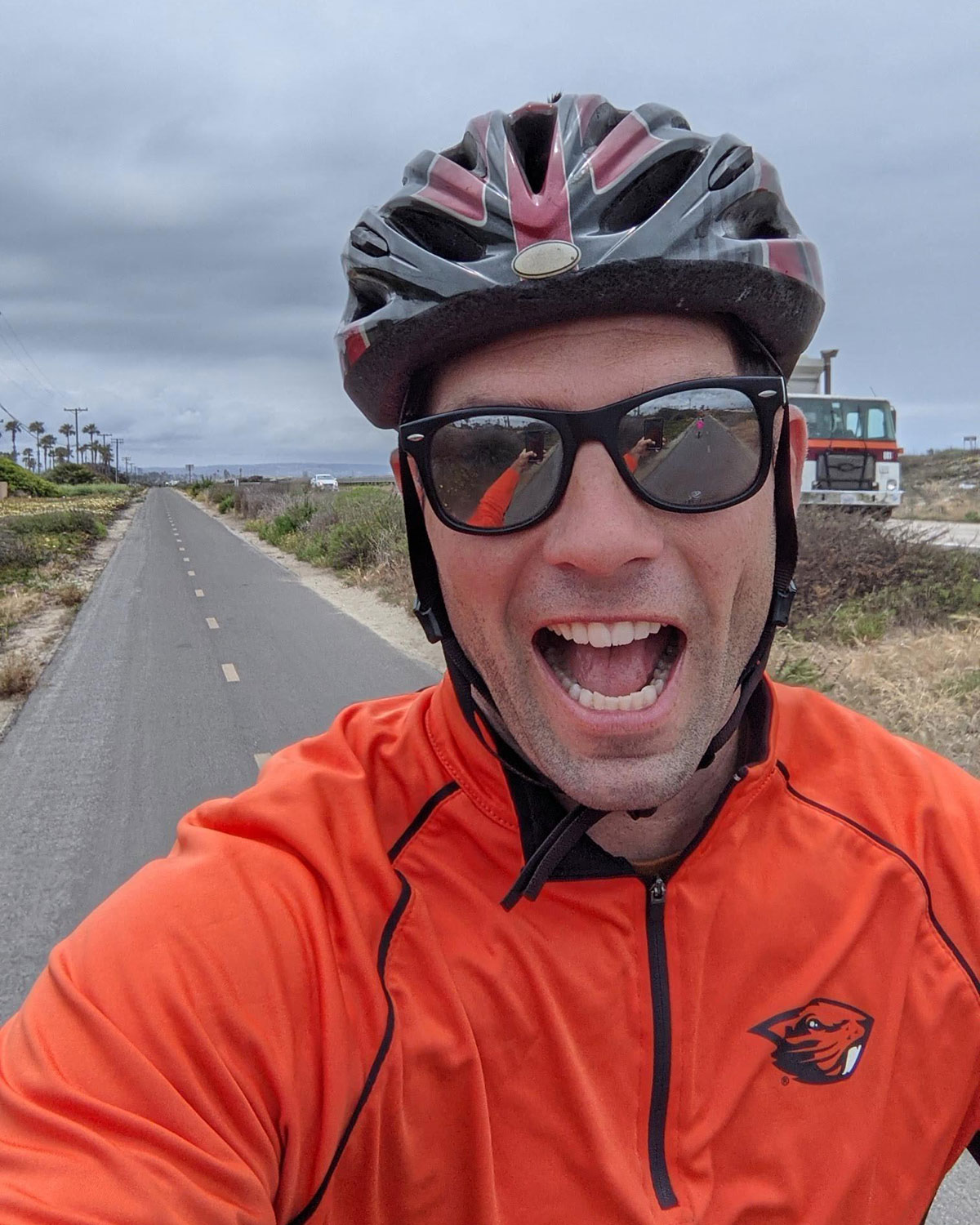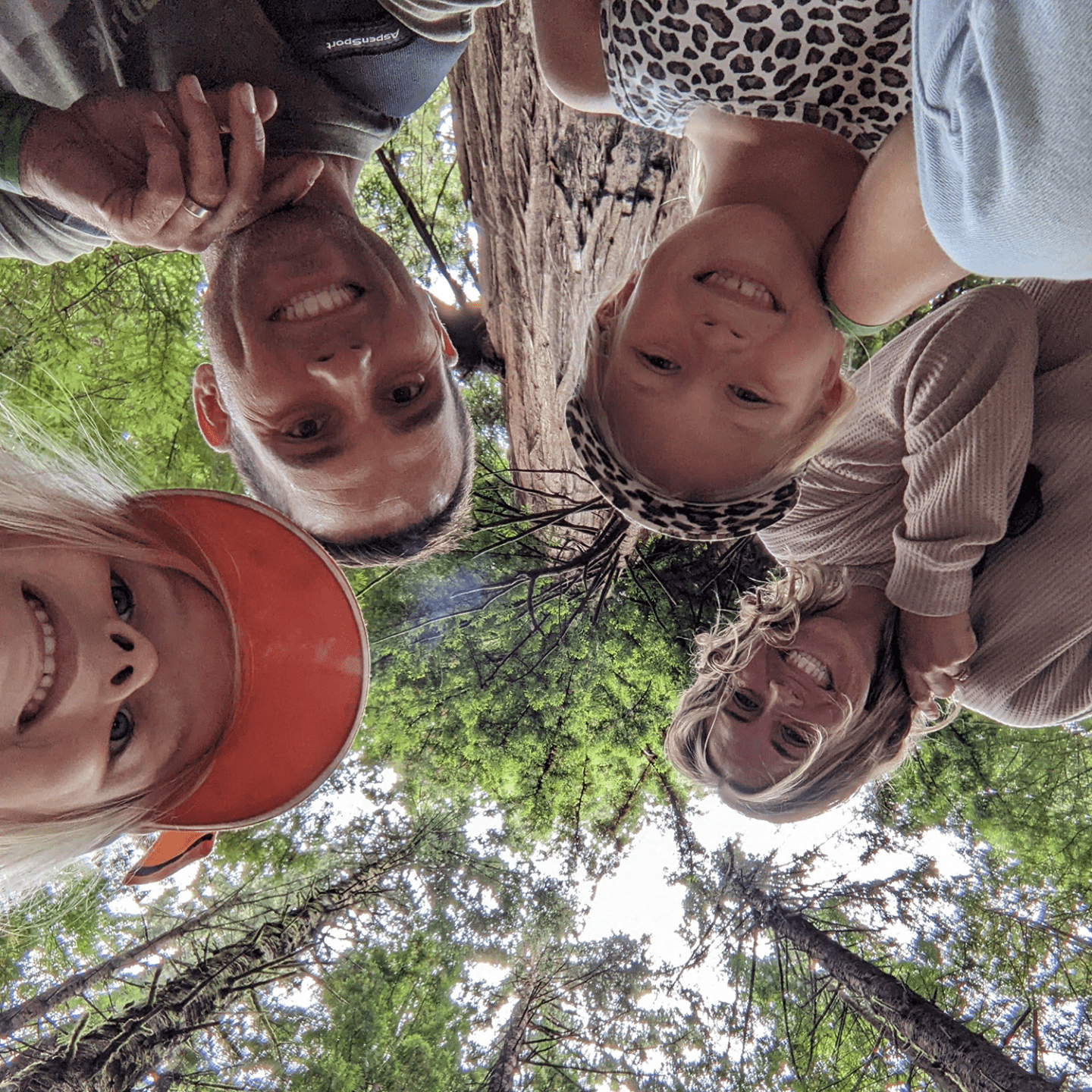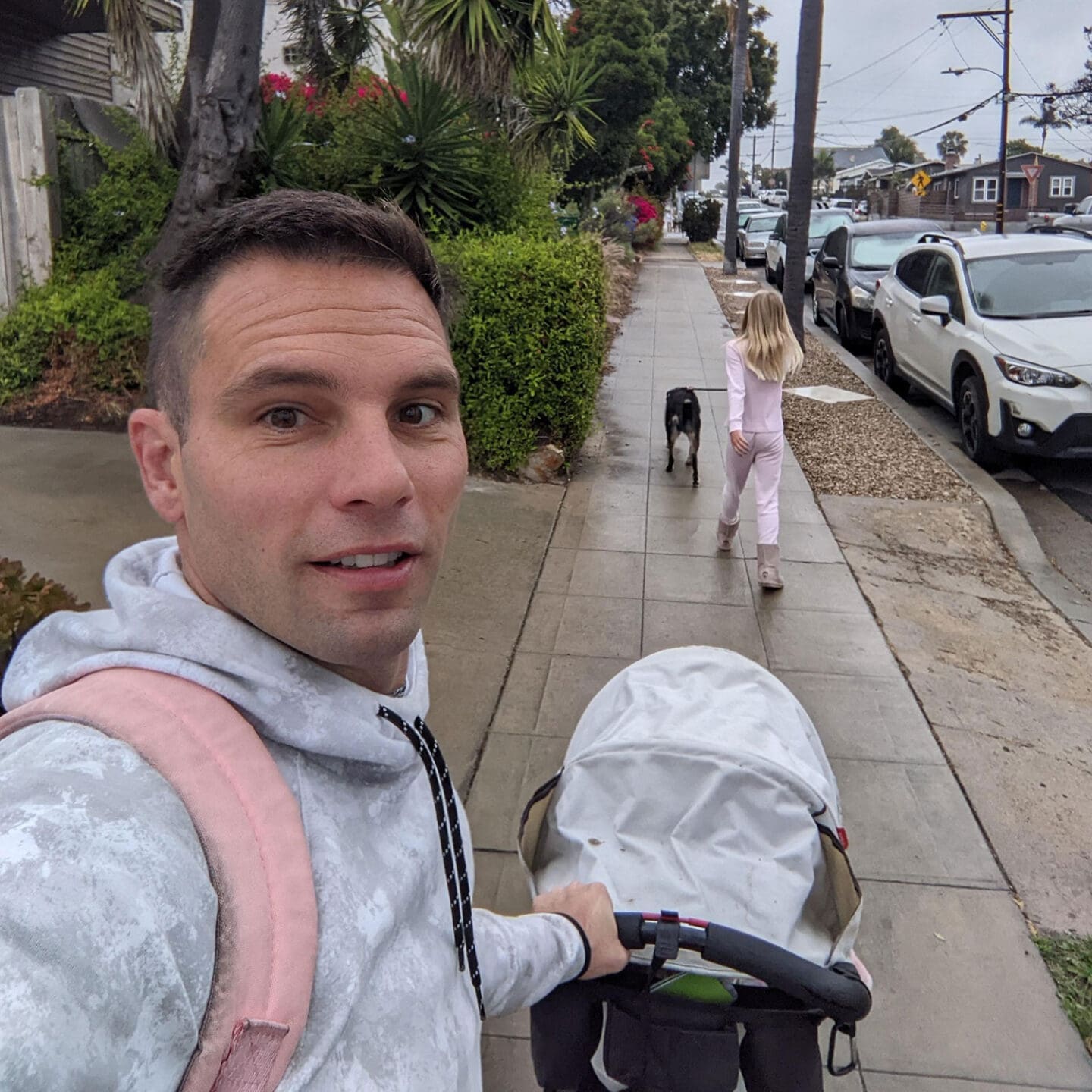“The opportunity to view our roadway network with safety as the priority over travel time or vehicle-oriented design has been enlightening and challenging.”
We’re an interconnected nationwide team, but we each have our own reasons for being passionate about the work we do. This month, get to know Mychal Loomis, associate planner in our San Diego office.
 How long have you been a transportation professional?
How long have you been a transportation professional?
I began my career in July 2006, so I’ve been a transportation professional for 17 years now (my career is almost a professional adult). I joined Kittelson in June 2021 to open our San Diego office with Chris Romano.
Most of my time outside of work is spent with my wife and two daughters—being outside in the San Diego sun, playing or watching sports, and doing school activities. Having kids expanded my perspectives on the role of transportation, such as being able to walk and bike with your family on the road, having access to parks, and exploring different modes of travel like the opportunity to ride the public bus as a kid (which was something I didn’t do). But safety stands out as the most important thing—teaching them how to be safe as well as designing streets to be as safe as possible for all ages and abilities.


Tell me about your pre-transportation background. How did you get here?
I have engineers in my family, so I was exposed to engineering growing up, but I was always fascinated by how people get from one place to the other and how different modes of transportation work together—especially in how large events, like professional sports, manage the influx of people and traffic. I didn’t know that was going to be my career until I explored different engineering programs and got hooked on the transportation classes and helping as a teacher’s assistant for a great professor at Oregon State University, Dr. Karen Dixon, who is actually one of our research partners.
What is most rewarding about your work?
Chris Brehmer told me recently that “it’s the decisions that we make as traffic planners and engineers that influence people’s lives and how they get around.” It’s one of the only engineering paths that’s completely visible to the public, and it can result in social changes. How we design streets really matters and I embrace the challenge of creating a network that provides options for people to travel with an aim for comfort and safety.
What are some interesting projects you’re working on right now?
Throughout my career I have had opportunities to tackle various types of projects—transportation studies, parking studies, long-range planning, traffic-related design plans, and just about anything our industry comes across. Recently, I was lucky enough to get experience with road safety work just before there was a major shift in focus and funding on prioritizing road safety across the country. The opportunity to view our roadway network with safety as the priority over travel time or vehicle-oriented design has been enlightening and challenging. The Safe Streets For All (SS4A) program has funded several projects that I am a part of, and will continue to provide opportunities in the future. Two of these projects I’m working on right now are the San Luis Obispo Council of Governments (SLOCOG) regional safety action plan and a Caltrans statewide safety plan.
What are you most excited about for transportation in 2024?
I’m excited for the discussions we will have as an industry and as communities on the trade-offs that come with the increased focus on safety first. We’re starting to rethink the space that is used, and there’s natural tension between vehicles and other modes, bicycle and pedestrian safety, on-street parking, and lane assignments. The overall use of our roadways, transportation’s role on climate change and resiliency, what it means to focus on safety, and providing mobility options have already led to some great conversations!
